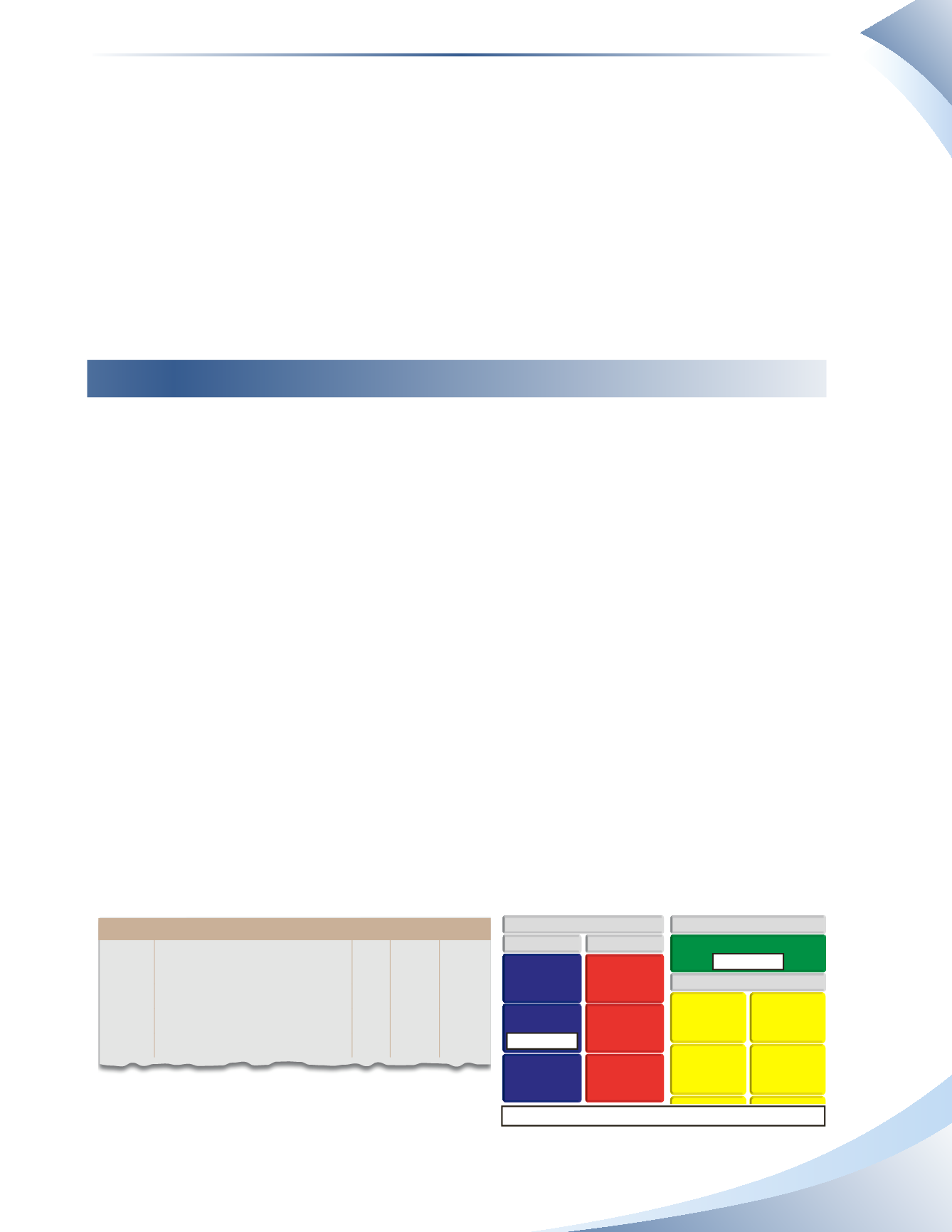
Chapter 5
The Accounting Cycle: Adjustments
107
1. Accrued revenue
2. Accrued expenses
3. Unearned revenue
4. Prepaid expenses
5. Depreciation
We will examine each category in detail and provide examples of the types of adjustments that
apply to each category. It is important to note that all adjustments presented in this chapter are just
changes made to the recorded values in the books. At no time will cash be received from customers
or paid to suppliers.Therefore, adjusting entries will never use the cash account.
accrued revenue
Accrued revenue
is revenue that has been earned but not yet recorded. There is nothing in the
ledger accounts to show for this yet. Revenue can accrue or accumulate over a period of time, such
as interest on money loaned to someone else or rent (if the business is a landlord). Other examples
of accrued revenue are where completed services have not been billed or there is a contract with a
client for work to be performed over a long period of time. Accrued revenues will always increase
a receivable asset account and increase a revenue account.
Suppose you have a contract with a client, stating you will provide them with services for 30 days.
At the end of the contract, you will bill the client and they will pay you. The contract starts on
September 21 and is worth $6,000. On September 21, you will not make a journal entry, since you
have not yet completed any work and no cash has been paid to you.
At the end of September you want to prepare your financial statements. At this point, there is
nothing in the books to indicate that you have done work for this client and that the client owes
you money for the work completed so far. Thus, service revenue and accounts receivable are not
stated correctly. Accounts receivable is used to record the amount owing because this is a binding
contract and the customer will pay in the future. An adjusting entry to record this accrued revenue
is required. You have completed 10 out of 30 days, or one-third of the contract, so you have earned
one-third of the $6,000, which is $2,000. Figure 5.2 illustrates the adjusting entry that must be
made.
BALANCE SHEET
LIABILITIES
ACCOUNTS
PAYABLE
UNEARNED
REVENUE
LOAN PAYABLE
INCOME STATEMENT
EXPENSES
SERVICE REVENUE
DEPRECIATION
INSURANCE
SALARIES
RENT
Owner’s equity increases by $2,000
ASSETS
CASH
OFFICE
SUPPLIES
ACCOUNTS
RECEIVABLE
+ $2,000 DR
+ $2,000 CR
journal
Page 1
date
2016
account title and explanation Pr debit credit
Sep 30 Accounts Receivable
2,000
Service Revenue
2,000
To accrue revenue on contract
____________
FIGURE 5.2


